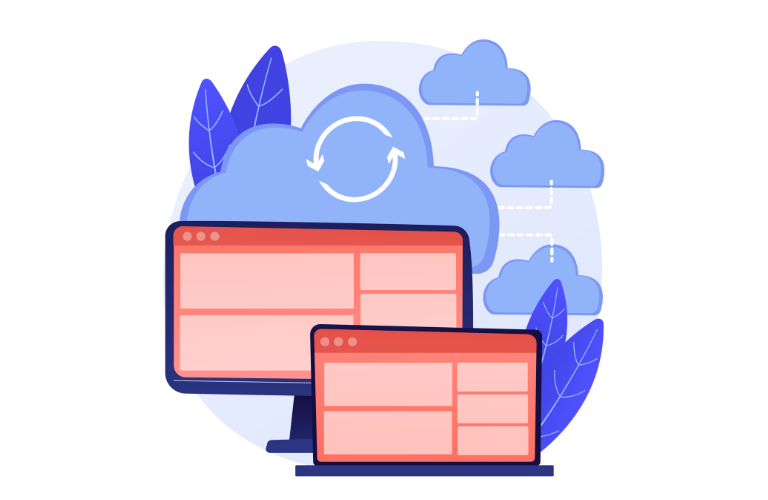Laravel stands out as a robust PHP framework for building dynamic web applications, but performance can lag as user traffic escalates. Serverless architecture emerges as a game-changing strategy, enabling seamless scalability without server management complexities.
This guide dives into scaling Laravel via tools like Laravel Vapor and serverless Redis, emphasizing optimization key notes after one level of traffic in your Laravel product. From caching adjustments to queue management, discover actionable techniques to maintain speed, reduce costs, and prepare for expansion.
Table of Contents
Why Opt for Serverless Architecture with Laravel?
Serverless architecture transfers infrastructure responsibilities to cloud providers (e.g., AWS), allowing developers to concentrate on coding. Laravel Vapor enables apps to operate on AWS Lambda, dynamically scaling with demand. This eliminates the need to pre-allocate servers for traffic peaks or pay for idle resources. The model simplifies operations and enhances efficiency—ideal for Laravel apps experiencing fluctuating traffic.
Configuring Laravel Vapor: A Detailed Walkthrough
Laravel Vapor combines Laravel’s sophisticated features with the scalability of serverless technology. It uses AWS Lambda to abstract server management. Follow these steps:
Install the Vapor CLI:
Run composer global require laravel/vapor-cli in your terminal. Verify Composer’s bin directory is in your system’s PATH.
Set Up AWS Credentials:
Create an AWS account, generate an IAM user with “AdministratorAccess,” and configure credentials using aws configure with your Access Key ID and Secret Key.
Integrate Vapor into Your Project:
Execute composer require laravel/vapor in your Laravel project. Update vapor.yml with your app’s ID, name, and domain.
Deploy:
Run vapor deploy production. Your app is now hosted on AWS Lambda, ready to scale automatically.
This foundation ensures your Laravel app adapts to traffic fluctuations effortlessly.
Optimization Strategies Post-Traffic Surge
When traffic surpasses initial thresholds, bottlenecks like inefficient queries or session management issues may arise. Below are optimization key notes after one level of traffic in your Laravel product:
Enhanced Caching with Serverless Redis:
Replace Laravel’s default caching with serverless Redis (e.g., Upstash) to reduce database strain. Example:
use Illuminate\Support\Facades\Cache;
$data = Cache::remember('user_data', 7200, function () {
return DB::table('users')->where('active', 1)->get();
}); This caches active user data for two hours.
Query Optimization:
Address N+1 issues via eager loading and indexing:
$orders = Order::with('customer')->where('status', 'pending')->get(); Add an index to the status column via migration:
Schema::table('orders', function (Blueprint $table) {
$table->index('status');
}); Efficient Queue Management:
Offload resource-heavy tasks (e.g., PDF generation) using AWS SQS:
ProcessReport::dispatch($report)->onQueue('reports'); Configure queue workers in config/queue.php for seamless background processing.
Implementing these steps post-traffic growth ensures stability under pressure.
Boosting Performance with Serverless Redis
Laravel’s file-based sessions struggle in distributed environments. Serverless Redis (e.g., Upstash) provides a centralized, scalable solution:
Why Redis?
Its in-memory storage excels at handling high-throughput tasks like session management and caching.
Setup Guide:
- Sign up for Upstash and create a Redis cluster.
- Retrieve the cluster’s endpoint, password, and port.
- Install Predis: composer require predis/predis.
- Update .env:
REDIS_HOST=your_upstash_endpoint
REDIS_PASSWORD=your_password
REDIS_PORT=your_port
CACHE_DRIVER=redis
SESSION_DRIVER=redis - Clear config: php artisan config:clear.
This ensures synchronized sessions and rapid data access across servers.
Advantages of Serverless Deployment
Adopting serverless architecture offers significant benefits:
- Automatic Scaling: Lambda provisions resources per request, handling thousands of simultaneous users.
- Cost Efficiency: Pay only for actual usage, avoiding fixed server expenses.
- Simplified Deployment: Use vapor deploy for quick, error-free updates.
- Global Availability: AWS’s multi-region support minimizes downtime risks.
For example, an e-commerce platform during flash sales can leverage Lambda’s scalability while Redis caches product listings, preventing server overload.
Post-Traffic Performance Adjustments
After traffic spikes, monitor metrics via AWS CloudWatch or Vapor’s dashboard. Key optimization key notes after one level of traffic in your Laravel product include:
Lambda Concurrency Tuning:
Limit instances in vapor.yml to balance cost and performance:
environments:
production:
concurrency: 15 Database Sharding:
Distribute Redis data across clusters for large-scale apps.
RDS Read Replicas:
Redirect read queries to replicas via AWS Console.
Real-World Example: E-Commerce Platform Scaling
Imagine a Laravel-based e-commerce site experiencing a 10x traffic surge during holiday sales. By migrating to Vapor:
- Lambda automatically scales checkout processes.
- Redis caches product catalogs, slashing database load.
- Queues handle order confirmations:
SendConfirmation::dispatch($order)->onQueue('notifications'); Post-surge optimizations like indexing product_id and caching inventory data ensure sustained performance.
Troubleshooting Common Issues
- Cold Starts: Enable provisioned concurrency in vapor.yml to minimize latency.
- Cost Management: Set AWS billing alerts to monitor expenses.
- Debugging: Activate VAPOR_DEBUG=true in .env for deployment logs.
Tools & Resources
- Internal Guides: Explore Laravel Queue Optimization or Advanced Caching Techniques.
- External Links: Refer to AWS Lambda Documentation or Upstash Redis Setup.
- Monitoring: Integrate New Relic for real-time performance insights.
Conclusion: Embrace Serverless for Future-Ready Apps
Scaling Laravel with serverless architecture via Vapor and Redis ensures your app remains agile under traffic pressure. Apply optimization key notes after one level of traffic in your Laravel product—caching, query tuning, queue offloading—to sustain performance. Monitor metrics, refine strategies, and watch your app thrive.
Frequently Asked Questions (FAQs)
1. What is serverless architecture in Laravel?
Serverless architecture lets you run Laravel apps without managing servers. Tools like Laravel Vapor use AWS Lambda to handle requests, scaling automatically with traffic. You write code, and the cloud provider manages the rest—simple and efficient.
2. Why should I use Laravel Vapor for scaling?
Laravel Vapor makes scaling easy by integrating with AWS Lambda. It auto-scales your app as traffic grows, cuts server costs, and simplifies deployment. It’s perfect if you want to focus on coding instead of server upkeep.
3. How does serverless Redis help my Laravel app?
Serverless Redis, like Upstash, stores sessions and cache data centrally. This keeps your app fast and consistent across multiple servers, especially when traffic spikes. It’s a speed boost over file-based storage.
4. Can I still use my Laravel skills with serverless?
Yes! Laravel Vapor keeps the familiar Laravel framework intact. You use the same syntax, tools, and logic—like routes and Eloquent—while tapping into serverless benefits. No big learning curve needed.
5. What are optimization key notes after one level of traffic in your Laravel product?
These are tweaks you apply when traffic increases, like caching data, optimizing queries, or using queues. For example, caching with Redis or indexing database columns keeps your app fast as users grow.
6. Is serverless cheaper than traditional hosting for Laravel?
It depends. Serverless is cost-effective for variable traffic—you pay only for what you use. But at massive scale, costs can rise. Traditional hosting might be cheaper for steady, high traffic. Monitor usage to decide!




